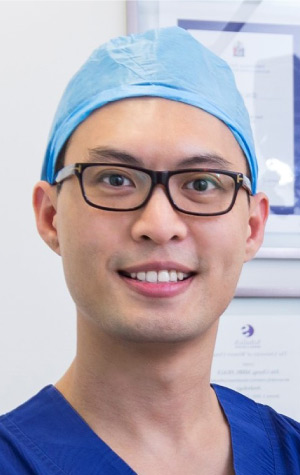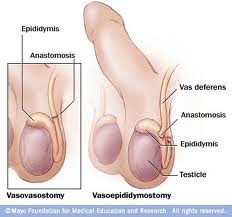
Meet Professor ChungAssociate Professor Chung is a urological surgeon specialising in andrology, microsurgical, and urological prosthetic surgery. Contact(07) 3832 1168 |
Microscopic vasectomy reversal
Microscopic vasectomy reversal (vaso-vasostomy) is performed under microscopic magnification using microscopic surgical tools. Microsurgical methods enable the best possible visualization of the vas allowing accurate and precise placement of each suture (the suture is finer than a human hair). Sometimes a sperm granuloma forms at the cut ends of the vas and this would result in more extensive surgery. If it is not possible to join the two ends of the vas together, the vas may be connected to the epididymis (vaso-epididymostomy). When microsurgical epididymostomy is necessary, the vas is attached to the epididymis by a series of circumferential sutures that are even finer than those used for vaso-vasostomy. What preparation is required?Since the vas reversal is performed under general anaesthesia, you should have nothing to eat or drink for 6 hours prior to treatment. Regular medications can be taken with a sip of water with the exception of blood thinning agents (eg. warfarin, aspirin, clopidogrel) or non-steroidal anti-inflammatories which need to be stopped for 7-10 days. A mid-stream urine (MSU) test may be required for some patients. What do I need to bring to surgery?
What happens in the operating room?You will meet your anaesthetist prior to surgery who will take a thorough medical history. Your procedure will be performed under general anaesthesia with anti-microbial cover. What are the risks?Vas reversal is very delicate microsurgery and when performed by an expert surgeon, is a safe procedure. Some of the common postoperative complaints include:
What to expect after surgery?You are usually discharged the same day and you can remove the surgical dressing and shower the next day. You may be discharged with 7 days of oral antibiotics. You should wear tight supportive underwear (e.g. brief or jock-strap) and most men usually return to normal work after a few days. However, you should avoid strenuous physical exertion or any sexual activity for 6 weeks. Follow-upYou will have a follow-up appointment with Prof.Chung scheduled for 2-4 weeks postoperatively and a semen analysis will be arranged.
Meet Professor ChungAssociate Professor Chung is a urological surgeon specialising in andrology, microsurgical, and urological prosthetic surgery. Contact(07) 3832 1168 |

 Microscopic vasectomy reversal has been shown to be more cost-effective for men with prior vasectomy history to conceive than to go through assisted reproductive technologies such as IVF treatment. However, there are many factors that could potentially impact the success of paternity/pregnancy such as the duration of vasectomy, the development of adverse features post vasectomy and your partner’s age and fertility status.
Microscopic vasectomy reversal has been shown to be more cost-effective for men with prior vasectomy history to conceive than to go through assisted reproductive technologies such as IVF treatment. However, there are many factors that could potentially impact the success of paternity/pregnancy such as the duration of vasectomy, the development of adverse features post vasectomy and your partner’s age and fertility status.



